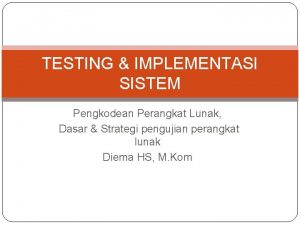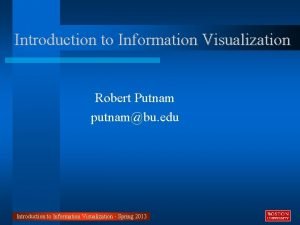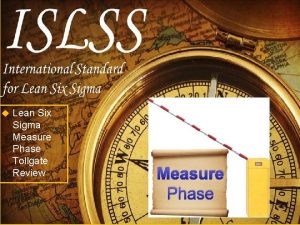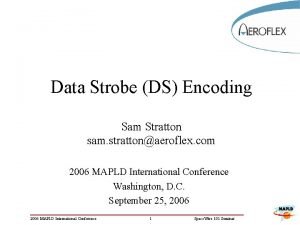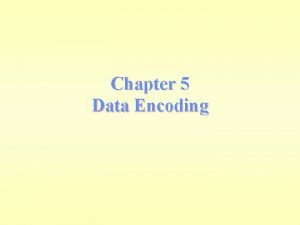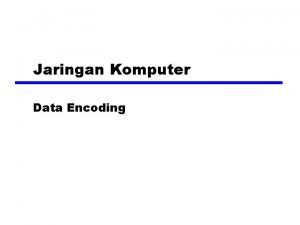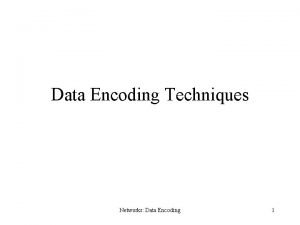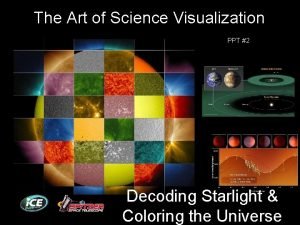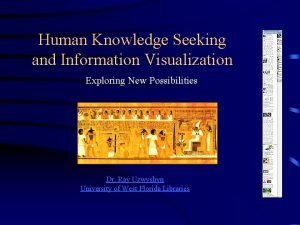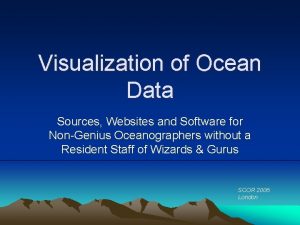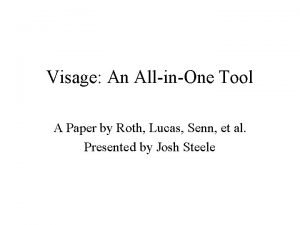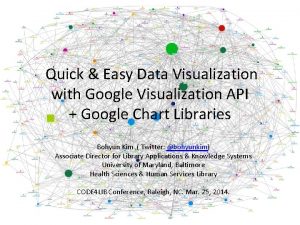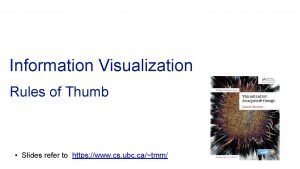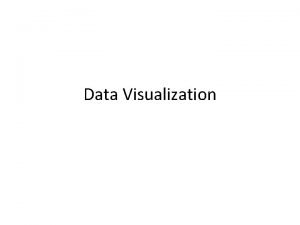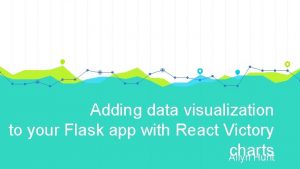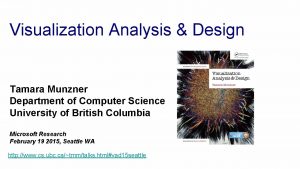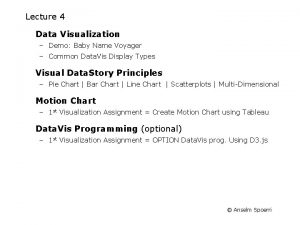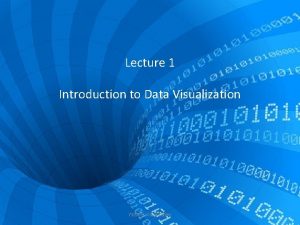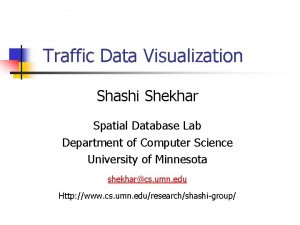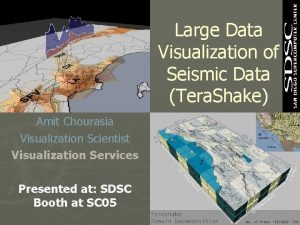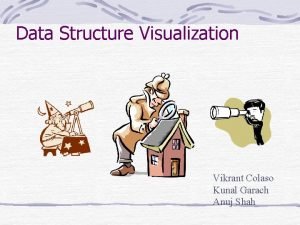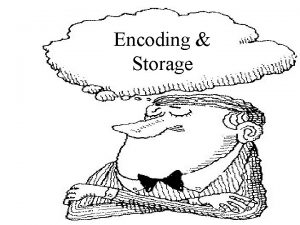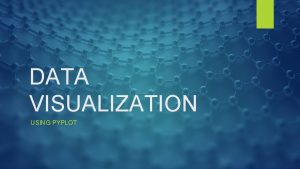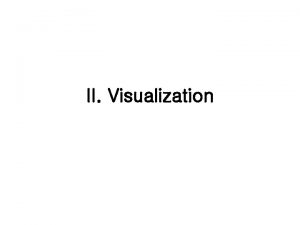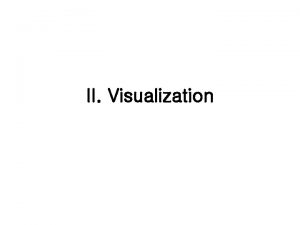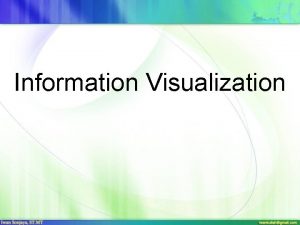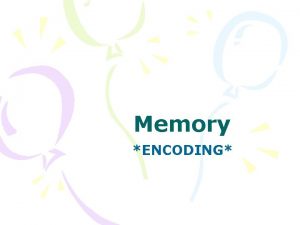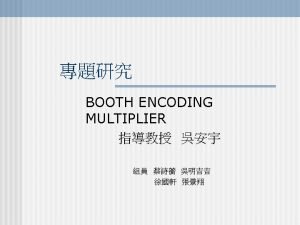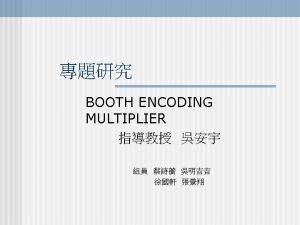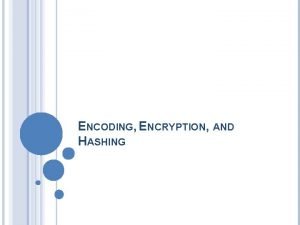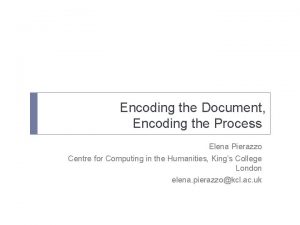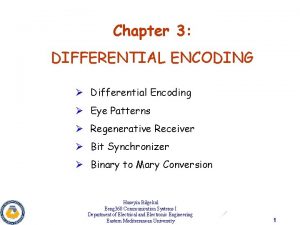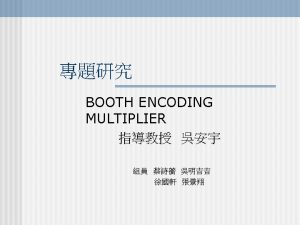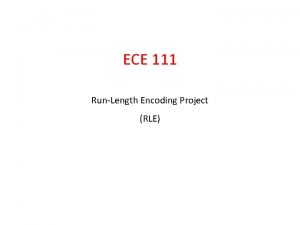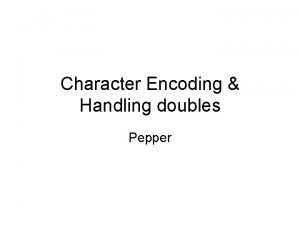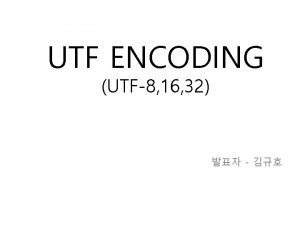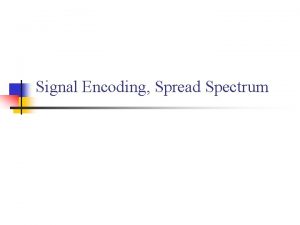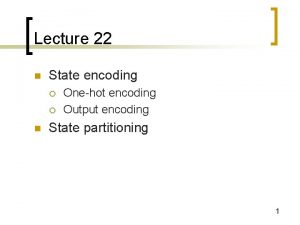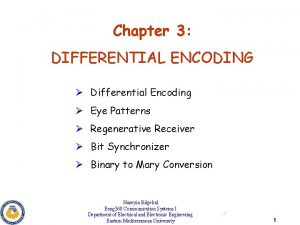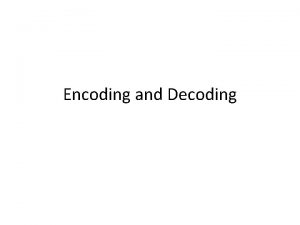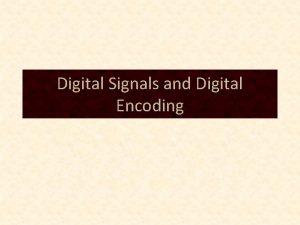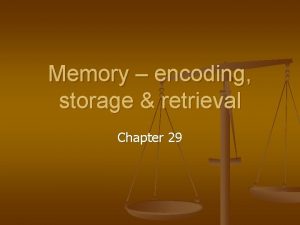Visualization Encoding Introduction Information visualization starts from data































- Slides: 31

Visualization Encoding

Introduction ¨ Information visualization starts from data. ¨ There are many forms that the data could take, text, spreadsheets, relational DB tuples, etc. ¨ There are many patterns that the data could follow, clustering, outlier, correlation, etc. ¨ Encoding: Data Application Domain Graphic Presentation

Fundamental Tasks ¨ Information presentation. Maps, Photographs, Movies, … ¨ Information extraction. Interactive graphical interface

Information Presentation Data Mining Example: Clustering

Information Extraction Data Mining Example: Clustering

Data Types ¨ 1 -D, 2 -D, 3 -D, temporal, multi-dimensional, tree and network data. ¨ Data types characterize the information objects in the task domain.

Basic Visualization Tasks ¨ Overview of a collection of data. ¨ Zoom in/on objects of interest. ¨ Filter out uninterested items. ¨ Details-on-demand: view details. ¨ Relate: View relationship. ¨ History: Undo, Refinement. ¨ Extract a subset of the data.

1 -D Data and Task Encoding ¨ Linear data: textual document, source code, etc. ¨ User problems: count, find, replace, … ¨ Encoding: fonts, color, size, layout, scrolling, selection capabilities, … ¨ Product example: text editor, browser, …

2 -D Data and Task Encoding ¨ Planar or map data: geographical maps, floor plans, newspaper layouts, … ¨ User problems: find adjacent items, search containment, find paths, filtering, details-on -demand, … ¨ Encoding: size, color, layout, arrangement, multiple layers, … ¨ Product example: CAD

3 -D Data and Task Encoding ¨ Real-world objects: building, human body ¨ User problems: adjacency in 3 -D, inside/outside relationship, position, orientation, occlusion ¨ Encoding: overviews, landmarks, transparency, color, perspective, stereo display ¨ Product example: CAD

Temporal Data and Task Encoding ¨ Time series data: medical records, project management, historical presentation ¨ User problems: finding all events before, after or during some time period or moment. ¨ Encoding: time lines

Multi-dimensional Data and Task Encoding ¨ Relational and statistical databases tuples. ¨ User problem: finding patterns, clusters, correlations, gaps, outliers. ¨ Challenge: – Simultaneously display many dimensions of large subsets of data. – Create displays that best encode the data pattern for a particular task. – Rapidly select a subset of tuples or dimensions.

An Encoding Example

Dimensionality Encoding ¨ Multi-dimensional databases are structured as n-dimensional data cube. ¨ The dimensions of the data can be explicitly encoded in the structure of tables.

Data Set Encoding ¨ The data sources are encoded as layers. ¨ The different result sets are encoded as different panes in different layers.

User Interest Encoding ¨ Providing enough tools and allowing user to specify his interest. ¨ The table configuration encodes the user interest. ¨ Table configurations are defined in form of algebra – Concatenation – Cross product – Nest (Division)

¨ For ordinal fields, algebra operand symbols take all domain values. – A = domain (A) = {a 1, a 2, …, an} – Example: Month = {Jan, Feb, …, Dec} ¨ For quantitative fields, algebra operand symbols take the field names as values. – P = {P} – Example: Profit = {Profit} ¨ Ordinal fields partition the table into rows and columns; quantitative fields are spatially encoded as axes within the panes.

¨ Concatenation Example: – Quarter = {Qtr 1, Qtr 2, Qtr 4} – Product = {Coffee, Espresso, Herbal, Tea} – Profit = {Profit}, Sales = {Sales} Ordinal Field Quantitative Field Group By Sorted By

¨ Cross Product Example: – Ordinal x Ordinal - Ordinal x Quantitative

¨ Nest (Division) Example: - Quantitative field does not make sense for divisions

Product x Sum. Of. Sales Quarter x Sum. Of. Profit

Types of Graphics inside Panes ¨ Types of Panes: – Ordinal – Quantitative - Quantitative


Visual Encoding ¨ Shape ¨ Size ¨ Orientation ¨ Color

Tree Type Data and Task Encoding ¨ Exponential data: hierarchies, tree structures. ¨ User problems: find the structural properties – Height of the tree – Number of children – Find nodes with same attributes ¨ Encoding: – Outline style of indented labels

- Node-link diagrams: allowing the encoding of linkage between entities. - Treemap: child rectangles inside parent rectangles ¨ Product example: windows explorer, internet traffic, hyperbolic browser


Network Data and Task Encoding ¨ Graph data: multiple paths, cycles, lattices ¨ User problems: – Shortest path – Topology problems ¨ Encoding: imperfect – Node-link diagram – Matrix

General Encoding Principles ¨ Expressiveness: – Encode all the facts in the result set. – Encode only the facts in the result set. ¨ Effectiveness: – Depends on the capability of the perceiver. – Encode the more important information more effectively.

– Perceptual accuracy ranks

Conclusion ¨ Visualization helps – Information presentation – Information extraction ¨ Good visual encoding should match the target data and user problems. ¨ Studying the successful/unsuccessful visual encoding designs and techniques helps us to design and develop new encoding approaches.
 Hardware encoding or software encoding
Hardware encoding or software encoding Introduction to information visualization
Introduction to information visualization Task abstraction
Task abstraction Tollgate review
Tollgate review Strobe data
Strobe data Encoding data
Encoding data Types of line encoding
Types of line encoding Data encoding and modulation
Data encoding and modulation Signal encoding techniques in data communication
Signal encoding techniques in data communication Data encoding
Data encoding Data encoding techniques
Data encoding techniques Information visualization ppt
Information visualization ppt Information visualization
Information visualization Ocean data visualization
Ocean data visualization Visage data visualization
Visage data visualization Google visualization api query language
Google visualization api query language Data visualization rules of thumb
Data visualization rules of thumb Graphics must quote data out of context
Graphics must quote data out of context Before and after data visualization
Before and after data visualization Flask data visualization
Flask data visualization Data visualization meetup
Data visualization meetup Data visualization sketch
Data visualization sketch Hitlantis
Hitlantis Tamara munzner
Tamara munzner Name voyager
Name voyager Data visualization lecture
Data visualization lecture Heap sort visualization
Heap sort visualization Traffic data visualization
Traffic data visualization Panoramix data visualization
Panoramix data visualization Seismic data visualization
Seismic data visualization Supersonic flow
Supersonic flow Data structure visualization tool
Data structure visualization tool
